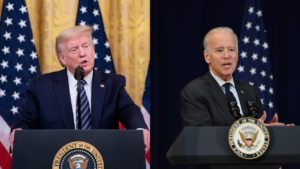
The 2000 race for the White House came down to a hairbreadth result in a single state, Florida.
George W. Bush, the Republican, insisted he had won, charged that Democrats were trying to overturn a fair election and asked courts to stop recounts that showed him up by 537 votes.
After 36 days of chaos, the Supreme Court agreed. They gave Bush the election by a vote of 5-4.
Tens of millions of Americans will try to vote by mail because of the COVID-19 pandemic. But officials in 14 states are prohibited from processing mail-in ballots until Election Day; counting them could take days or weeks.
Those states include Pennsylvania and Michigan, battlegrounds that could decide the election.
So, barring a landslide, we could see a “red mirage” on Nov. 3, an election-night count of in-person votes that suggests that Trump has won — even though millions of votes for Biden are waiting to be tabulated.
Trump will declare victory, claiming (as he has before) that mail-in ballots are inherently fraudulent. Both sides will barrel into courtrooms, seeking to force states to decide the outcome their way. And demonstrators, some carrying weapons, will pour into the streets.
The president has spent months preparing his voters for fraud, although not a single vote has been cast.
“It’ll be fixed, it will be rigged,” he charged in July.
State authorities could bungle their counts of mail-in ballots or be hampered by shortages of poll workers and funding.
If an impasse persists long enough, Trump or Biden could call on state legislatures to ignore the popular vote and award their state’s electoral votes on their own authority, a power the Constitution gives them.
The battle probably would end in the Supreme Court or in Congress.
If you’re willing to fight for Main Street America, click here to sign up for my free weekly email.





